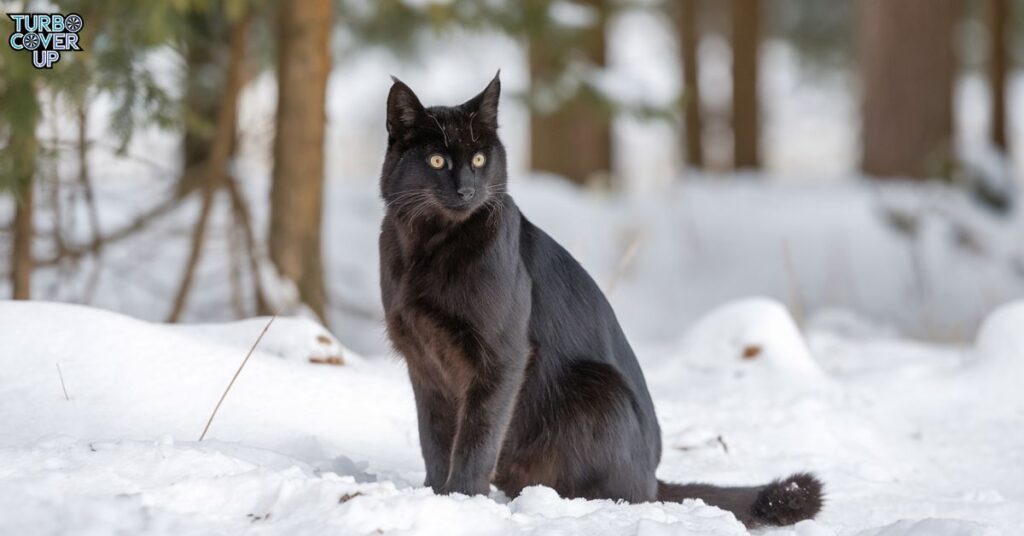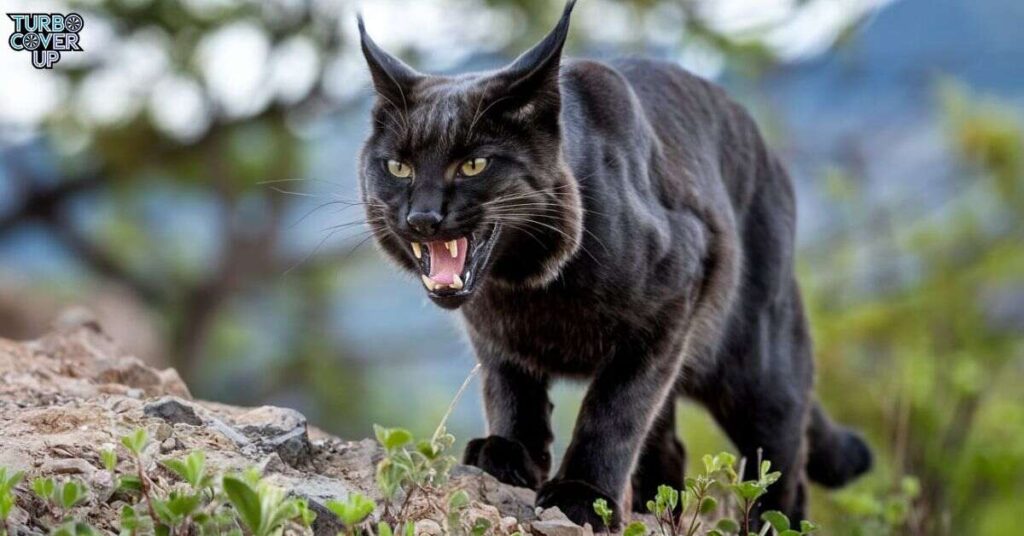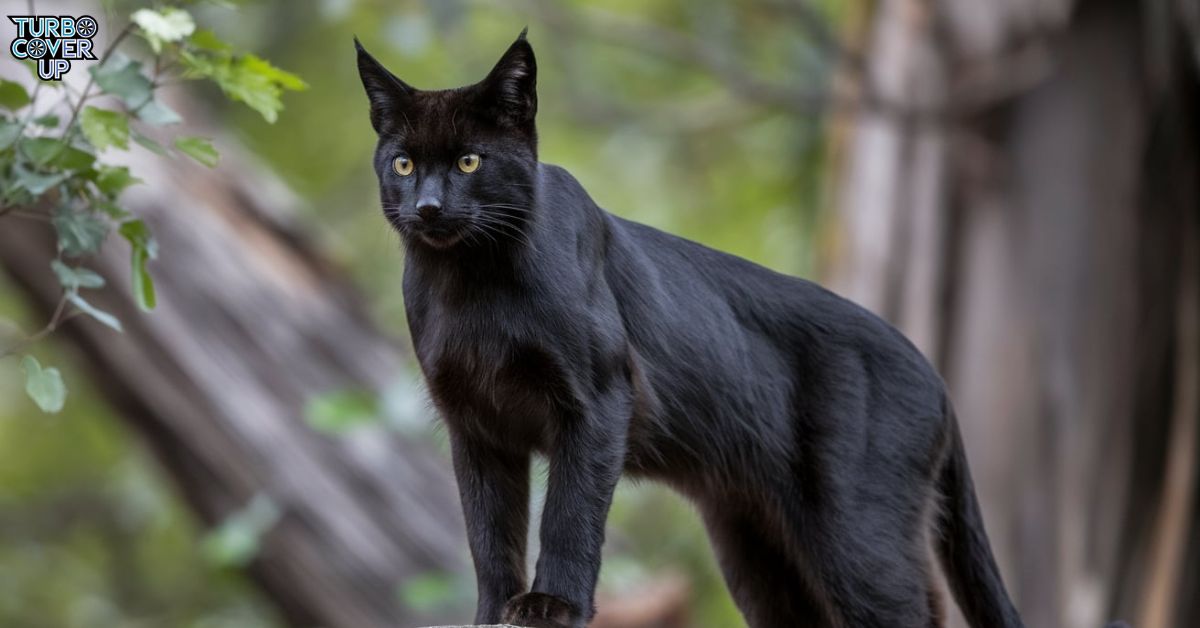The black bobcat is a rare and mysterious animal that fascinates wildlife lovers. Known for its dark, sleek coat, this unique bobcat is a melanistic version of the common bobcat, making it stand out in the wild. Though sightings are few, many wonder if these elusive creatures are real or just part of legend.
Bobcats are normally tan with spots, but the black bobcat has an almost entirely black coat due to a genetic mutation. Found mainly in places like Florida, these animals blend perfectly into shadowy forests, making them hard to spot. Their rare appearance sparks curiosity and awe among nature enthusiasts.
What Is a Black Bobcat?
The black bobcat is not an entirely separate species, but rather a melanistic variation of the common bobcat (Lynx rufus). Typically, bobcats are known for their tan or gray fur marked with dark spots or streaks, their short bobbed tails, and their tufted ears. Adult bobcats weigh between 15 to 40 pounds, with males generally larger than females. These wildcats are agile hunters, stalking through forests, swamps, and other rugged terrain of prey.
However, what makes the black bobcat so unique is its unusual dark coat, a genetic mutation that causes an overproduction of melanin, the pigment responsible for black or dark-colored fur. While bobcats usually have spotted or patterned coats, melanistic bobcats appear almost entirely black, though faint markings can sometimes still be seen up close.
Black Bobcat: Myth or Reality?

The existence of black bobcats has been a topic of intrigue for years. Many people associate black cats with superstition, and the black bobcat has similarly been cast into folklore. While there are numerous stories of people encountering dark-furred bobcats in the wild, scientific documentation is rare.
Case Study: In 2020, a Florida resident reported spotting a black bobcat near their home, capturing video footage that stirred interest among wildlife biologists. Though these sightings remain scarce, experts believe that the melanistic bobcat is a real, albeit rare, phenomenon.
What Is Melanism?
Melanism is a genetic condition where an excess of dark pigment (melanin) causes an animal’s fur or skin to appear black. It’s essentially the opposite of albinism, which results from a lack of pigment. While melanism has been documented in various species—such as jaguars, leopards, and squirrels—melanistic bobcats are particularly rare.
In some species, melanism offers an evolutionary advantage. For instance, a dark coat can serve as camouflage in dense forests, allowing predators to blend in with the shadows and surprise their prey.
In other cases, melanism may help regulate body temperature by absorbing more heat. However, because bobcats are not typically nocturnal hunters, the evolutionary benefit of melanism in this species remains unclear.
The Genetics of Melanism in Bobcats
The occurrence of melanism is controlled by a specific gene that affects pigmentation. Melanistic bobcats inherit a recessive mutation, which is why they are rare. For two bobcats to produce melanistic offspring, both must carry the gene, even if they don’t exhibit the trait. This rarity makes black bobcats particularly fascinating to wildlife biologists.
It’s important to note that melanism doesn’t affect a bobcat’s overall health or hunting ability. While their dark fur may seem like a disadvantage in open areas, in the dense, shadowy environments where bobcats thrive, melanistic bobcats are likely just as efficient as their lighter-colored counterparts.
Where Are Black Bobcats Found?

Over the years, black bobcat sightings have been reported in various parts of North America, but they are most commonly seen in Florida. The thick forests and swampy terrain of Florida provide an ideal habitat for these secretive creatures. Other sightings have been documented in Texas, Georgia, and Washington state.
Here’s a table showing a few regions where black bobcats have been sighted:
| Location | Year of Sighting | Description |
| Florida | 2020 | Caught on video in a suburban area |
| New Brunswick | 2017 | Reported by a wildlife photographer |
| Texas | 2015 | Observed crossing a rural highway |
| Georgia | 2019 | Spotted near a nature reserve |
| Washington | 2016 | Sighted in a densely wooded national park |
Bobcats are incredibly adaptable and can thrive in a variety of environments, including forests, deserts, and swamps. However, melanistic bobcats are more likely to be found in densely wooded areas where their dark fur provides excellent camouflage.
In Florida, for instance, the mix of dense forests and subtropical climate creates an ideal environment for black bobcats to remain hidden. The Everglades, with its thick foliage and murky waters, is one such region where these bobcats may roam undetected.
Other potential habitats include the forests of Georgia and Texas, where similar environmental conditions allow these rare creatures to blend into their surroundings.
Do Black Bobcats Act Differently?
Bobcats are typically solitary animals. They are territorial, marking their range with urine or feces to deter other predators. Bobcats are most active at dawn and dusk (crepuscular), using the low light of twilight to their advantage as they hunt small prey like rabbits, rodents, and birds.
While the behavior of melanistic bobcats doesn’t appear to differ significantly from their non-melanistic counterparts, their dark coats may offer a stealth advantage when hunting at night or in densely shadowed areas.
Black Bobcats and Human Interaction
Reports of black bobcats near human populations are rare but not unheard of. For example, in 2019, a black bobcat was sighted near a suburban neighborhood in Georgia. Residents reported that the animal seemed bold, walking near homes before disappearing into the nearby forest.
Some biologists suggest that melanistic bobcats might be slightly more curious about humans due to their solitary nature. However, like all wild animals, black bobcats tend to avoid human interaction unless they are cornered or threatened.
How Many Black Bobcats Exist?
Estimating the population of melanistic bobcats is challenging due to their rarity and secretive nature. Based on reported sightings, experts believe there are fewer than 20 confirmed melanistic bobcats in North America. However, because bobcats are excellent at remaining undetected, the true number may be higher.
Despite their low numbers, the black bobcat is not currently considered a distinct subspecies, and as such, it is not specifically protected under conservation laws. However, general bobcat populations are stable, and the species is listed as Least Concern by the IUCN.
Conservation Efforts
The greatest threat to bobcats (including melanistic ones) is habitat loss. Urbanization and deforestation are shrinking the natural environments that bobcats rely on. Additionally, vehicle collisions and poisoning from rodenticides pose significant risks to bobcat populations.
Conservation efforts aimed at protecting bobcats focus on preserving their natural habitats and minimizing human-wildlife conflict. By maintaining large areas of undeveloped land and educating the public about the importance of wildlife conservation, we can help ensure that these rare creatures continue to thrive.
Fascination with the Black Bobcat
Throughout history, black animals have been shrouded in mystery and myth, often symbolizing bad luck or dark forces. The black bobcat, much like its domesticated feline counterpart, has been the subject of various legends. Some Native American tribes believed that bobcats were spirit animals, representing cunning, strategy, and the ability to thrive in adversity.
In modern times, the black bobcat has become a symbol of wild beauty and resilience. These creatures captivate the imagination, not only because of their rarity but also because they embody the untamed spirit of the natural world.
Why Humans Are Drawn to Rare Creatures
Humans are naturally fascinated by rare and unusual animals. The black bobcat, with its shadowy appearance and elusive nature, stirs curiosity and awe. Seeing a black bobcat is like finding a hidden treasure—a moment of wonder in the wild that few will ever experience.
As biologist Mark Elbroch notes, “Encounters with these animals remind us of the vast mysteries still lurking in the wild places of the world.” It’s a powerful reminder that even in our modern age, nature still holds secrets.
Conclusion
The black bobcat is a true marvel of nature, a creature that exists at the intersection of myth and science. While rare, these melanistic bobcats are not merely legends—they are real, living animals that occasionally make their presence known in the wild.
Understanding the genetics, behavior, and habitats of these unique creatures helps us appreciate the diversity of life in the animal kingdom. And while sightings may be rare, the knowledge that such an animal exists only adds to the allure of the natural world.
So, the next time you’re hiking through a dense forest, keep your eyes peeled—you just might be lucky enough to spot one of these shadowy, mysterious creatures yourself.
Read More:

